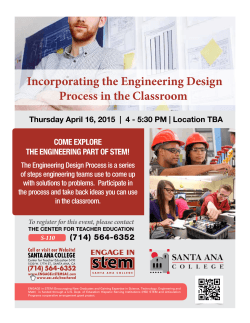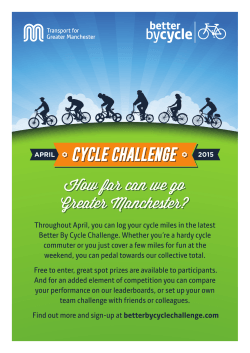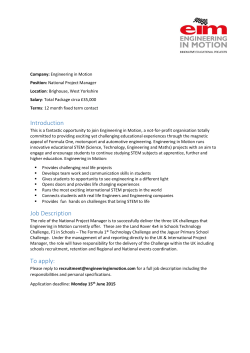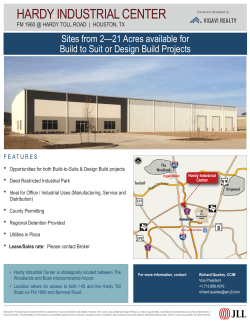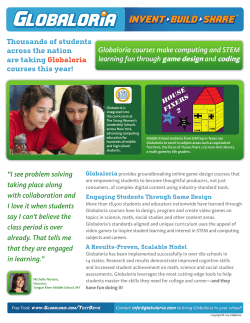
Sample Exam - Millersville University Herbarium
This exam is the property of CR Hardy. It may not be sold or distributed in any manner. Bio 221 – Concepts of Botany Dr. Hardy Exam 1 (Spring 2013) Name: ________________ Instructions: -Please do not turn this page over until Prof. Hardy has instructed you to do so. -You must hand in this question packet with your name on it at the end of the period with your scantron. -Scantron answer bubbles should be completely filled in with a number 2 pencil. -Start by filling in your complete last name and both first and middle name initials. -Fill in your MU number in the Social Security number slot. -Read ALL possible answers, then choose THE BEST single answer. -Please do not turn this page over until Prof. Hardy has instructed you to do so. ***************************************************************************** Exam 1, Botany, Page 1 of 13 This exam is the property of CR Hardy. It may not be sold or distributed in any manner. 1. Lenticels and stomata function in gas exchange. A. True B. False 2. Retardation of water loss by cork cells is provided by A. suberin. B. lignin. C. mucigel. D. stomata. 3. Which is an important function of the secondarily thickened and lignified cell walls of tracheary elements such as tracheids and vessel elements? A. mechanical support for the body of a plant. B. mechanical support to allow for tremendous negative pressures generated inside them. C. all of the above. 4. Which “stem” axis sits above the cotyledons in a seedling? A. the hypocotyl B. the epicotyl C. the plumule D. the radicle 5. In a young seedling the part of the stem below the cotyledons is called the A. epicotyl. B. hypocotyl. C. plumule. D. radicle. E. coleoptile. 6. Commercially, cotton fibers are removed from seeds by the process of ... A. Retting B. Decortication C. Ginning. 7. Flax fibers are... A. Leaf fibers B. Bast fibers C. Surface or seed fibers D. Synthetic fibers E. Synonymous with wool 8. Which best describes the leaf or leaves below? a. simple b. pinnate c. 2-pinnate (bipinnate) d. 3-pinnate (tripinnate) e. palmate Exam 1, Botany, Page 2 of 13 This exam is the property of CR Hardy. It may not be sold or distributed in any manner. 9. The pictures below depict.... A. a root cross-section from a dicot (left) and monocot (right). B. a root cross-section from a monocot (left) and dicot (right). C. a stem cross-section from a dicot (left) and monocot (right). D. a stem cross-section from a monocot (left) and dicot (right). E. a leaf cross-section from a monocot (left) and a dicot (right). 10. Which of the following is not represented below? a. prickles b. thorns c. spines 11. How were the Chamorro getting dangerous levels of BMAA into their system? A. they were unknowingly inhaling cycad pollen B. they were eating fadang, a flatbread made from cycad leaves. C. they were eating fadang, a flatbread made from cycad seeds. D. they were eating the leaves of an unknown plant that grew next to the cycads E. they were eating bats 12. The types of gymnosperms most frequently stolen or poached and sold on the black market are.. A. Lycopods B. Conifers C. Cycads D. Ginkgos E. Horsetails Exam 1, Botany, Page 3 of 13 This exam is the property of CR Hardy. It may not be sold or distributed in any manner. 13. What are the structure(s) labeled by “1” below? A. Apical meristem B. Bud primordia C. Leaf primordia 2. D. Stem primordia E. Adventitious roots 1. 3. Questions 14-16, refer to below, right 14. Phyllotaxy is... A. Petiolate B. Whorled C. Sessile D. Alternate E. Opposite 15. Blade venation is... A. Palmate B. Pinnate C. Dichotomous D. Parallel E. Opposite 16. The leaf is... A. Petiolate B. Pedicellate C. Sessile D. Palmate E. Pinnate Exam 1, Botany, Page 4 of 13 This exam is the property of CR Hardy. It may not be sold or distributed in any manner. 17. What lies at the very tip of a root? A. root hairs B. the region of maturation C. the root cap D. the region of cell division E. the root apical meristem 18. What specifically prevents water from entering the root vasculature via the apoplastic pathway? A. epidermis. B. pericycle. C. cortex. D. phloem. E. endodermis. 19. In traversing the root to the central xylem vessels, the last living tissue that water passes through before entering the xylem is (assuming the most direct route) the A. pericycle. B. endodermis. C. cortex. D. phloem. E. epidermis. 20. In addition to anchoring a plant, roots usually function directly in which of the following processes? A. photosynthesis B. production of new leaves C. production of bud scales D. absorption of inorganic nutrients in solution E. all of these answers are correct. 21. Arborescent monocots are plants that grow tree-like and form support tissue... A. via a vascular cambium. B. via a eustele C. via a pseudobulb D. via a cork cambium E. without the aid of a vascular cambium 22. Banana trees are able to grow so tall on account of a. woody stems b. stiff, overlapping and sheathing leaf bases c. a secondary-thickening meristem that develops after the woody stem elongates Exam 1, Botany, Page 5 of 13 This exam is the property of CR Hardy. It may not be sold or distributed in any manner. 23. Some monocots are able to become arborescent with an above-ground stem that is “woody” in texture. Characteristics of such plants include a. the lack of a vascular cambium producing regular concentric growth rings or wood. b. a “woody”, fibrous trunk with many scattered vascular bundles as seen in cross-section. c. a vascular cambium with regular concentric growth rings or wood. d. all of the above. e. both “a” and “b” 24. Many arborescent monocots are characterized by the action of at least a primary thickening meristem. a. true b. false 25. Which is the correct order of leaf arrangement (phyllotaxy) adjectives, from left (1) to right (3)? 1. 2. 3. A. B. C. D. E. alternate, opposite, whorled. opposite, whorled, alternate. alternate, whorled, opposite. opposite, alternate, whorled. neither of the above. 26. Which best describes the leaf or leaves below? a. simple b. pinnate c. 2-pinnate (bipinnate) d. 3-pinnate (tripinnate) e. palmate Exam 1, Botany, Page 6 of 13 This exam is the property of CR Hardy. It may not be sold or distributed in any manner. 27. Which of the following “trees” has a pseudostem? A. Oak D. Pony-tail-palm B. Pine E. Banana C. Coconut 28. About what percentage of a terrestrial carnivore’s yearly caloric intake directly or indirectly ultimately comes from plants? A. 0% B. 25% C. 50% D. 75% E. 100% 29. Guam is in which ocean? A. Atlantic B. Caribbean C. Pacific D. Indian E. Arctic 30. The story of solving the mystery of Guam Dementia or Lytico-Bodig is an example of where... A. ...a Pre-medicine program in Biology that is devoid of plant science courses is useful for solving problems in human health. B. ...the modern pharmaceutical industry and the drugs they produce can solve problems in human health. C. ...an understanding of plant science is useful for solving problems in human health. D. ...the National Institutes of Health could have benefitted from a little knowledge of the botany, ecology, and ethnobotany of Guam. E. Both C and D. 31. Paired appendages associated with or near a petiole where the petiole attaches to a stem are A. bundle scars. B. primordia. C. stipules. D. cuticles. E. leaf scars. 32. An organelle that has its own DNA and whose main function is the storage of starch is called a(n) A. Plastid D. Elaioplast B. Amyloplast E. Chromoplast C. Chloroplast 33. Photosynthesis in the leaf takes place primarily in the ... A. mesophyll parenchyma B. phloem C. xylem Exam 1, Botany, Page 7 of 13 This exam is the property of CR Hardy. It may not be sold or distributed in any manner. D. bundle fibers Exam 1, Botany, Page 8 of 13 This exam is the property of CR Hardy. It may not be sold or distributed in any manner. 34. Sugars produced by leaves must make their way to the ________ before being transported to the roots where they are needed. A. mesophyll B. phloem C. xylem D. bundle fibers E. epidermis 35. The most conspicuous and abundant organelle easily visible at the light microscope level in cells of the palisade mesophyll would be A. vacuoles. B. nucleoli. C. mitochondria. D. chloroplasts. E. ribosomes. 36. Stomata are part of this tissue. A. spongy mesophyll B. palisade mesophyll C. vascular bundles D. epidermis E. phloem parenchyma Questions 37-40, label the following figure with this set of possible terms: Use the “x” as a guide to where the pointer is pointing precisely. Use each term only once if at all. A. Procambium, B. Phloem, C. Xylem, D. Endodermis, E. Epidermis 37. X 40. X X X 38. 39. Exam 1, Botany, Page 9 of 13 This exam is the property of CR Hardy. It may not be sold or distributed in any manner. 41. The wood below is from a.... A. monocot B. conifer C. gymnosperm D. dicot angiosperm E. moss 42. The picture above shows cells oriented for transport in... A. the radial system only B. the axial system only C. both the radial and axial system. 43. The larger-diameter cells in the picture above in #41 are called Exam 1, Botany, Page 10 of 13 This exam is the property of CR Hardy. It may not be sold or distributed in any manner. A. Sieve tube elements B. Tracheids C. Fibers D. Parenchyma cells E. Vessel elements Exam 1, Botany, Page 11 of 13 This exam is the property of CR Hardy. It may not be sold or distributed in any manner. 44. A tuber is primarily what (by volume)? A. root B. stem C. leaf or leaves D. None of the above. 45. A bulb is primarily what (by volume)? A. root B. stem C. leaf or leaves D. None of the above. 46. A horizontal, spreading underground stem is called a what? A. stolon B. Tuber C. Tuberous root D. Cladophyll E. Rhizome 47. Which lettered arrow represents the most direct route to the outside of the stem cut in this picture? A C B D Exam 1, Botany, Page 12 of 13 This exam is the property of CR Hardy. It may not be sold or distributed in any manner. 48. How many full or partial years of secondary xylem are clearly discernible above in #47? A. zero B. one C. two D. three E. four 49. How many full or partial years of secondary phloem are clearly discernible above in #47? A. zero B. one C. two D. three E. four 50. How are cycads and palms similar? A. Many members of both groups have naked seeds borne in strobili, and pinnate leaves in basal or more typically terminal rosettes on unbranched or rarely branched stems. B. Many members of both groups have seeds borne in fruits, and pinnate leaves in basal or more typically terminal rosettes on unbranched or rarely branched stems. C. Many members of both groups have pinnate leaves in basal or more typically terminal rosettes on unbranched or rarely branched stems. D. Many members of both groups have palmate leaves in basal or more typically terminal rosettes on unbranched or rarely branched stems. E. Many members of both groups have visibly simple leaves in basal or more typically terminal rosettes on unbranched or rarely branched stems, and cones. Exam 1, Botany, Page 13 of 13
© Copyright 2025
